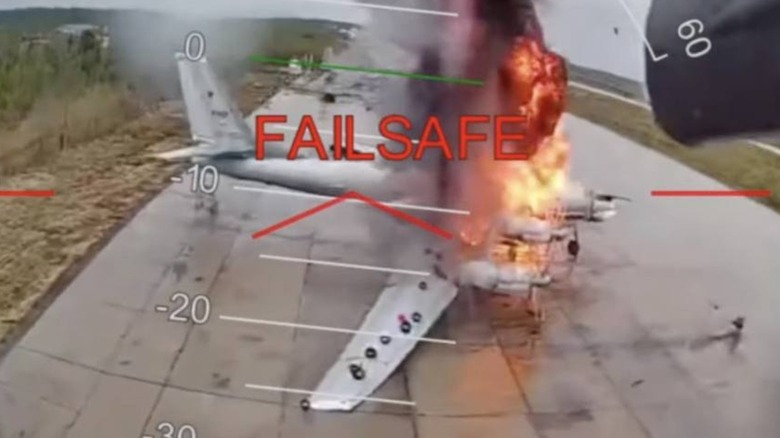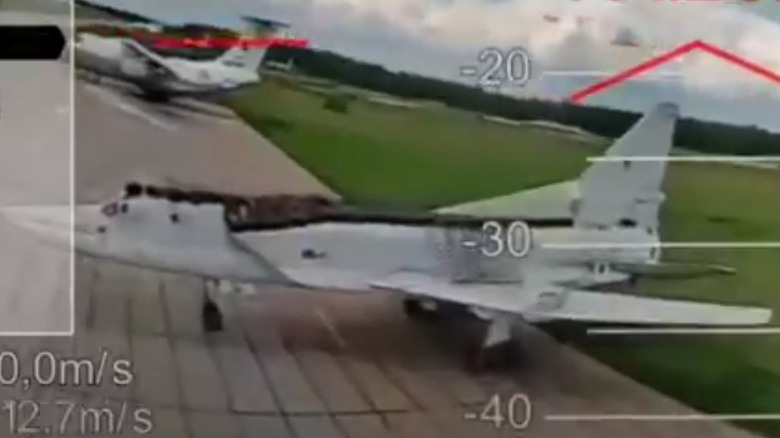Why Do Some Russian Fighter Jets Have Tires On Wings?
On June 1, 2025, Ukraine launched Operation Spider's Web against several high-value targets inside Russia. Ukraine released video footage taken from its FPV drones that carried out the attack, and they showed something a bit odd. As the drones moved toward their targets, which included Russia's fleet of strategic bombers, a bunch of black circles could be seen all over the aircraft, covering the wings and much of the fuselage. These circles were tires, begging the question, 'Why is Russia putting tires onto its planes?'
It's a reasonable question to ask, seeing as you can visit any airport in America, and you won't find any tires on anything but the landing gear. Similarly, the so-called "Boneyard" at Davis-Monthan Air Force Base, Arizona, houses around 4,400 parked aircraft of all kinds, and none of them have tires atop their wings or fuselages. As it happens, Russia isn't doing this as a new way to store tires, as there's a very practical reason for adding what amounts to circles onto a plane.
Russia likely does this to break up the features of the aircraft. This is because some munitions have the ability to identify targets based on their known shapes pre-loaded into a database. Adding the tires to the tops of planes theoretically mucks up the computer vision models on a missile that relies on such things and could conceivably protect the plane. This didn't work during Operation Spider's Web because of the manner in which it was carried out, but the theory is sound and might befuddle Western missiles should Ukraine choose to fire them.
Does it actually work?
Throwing old tires onto planes is certainly a low-cost option for missile defense, but does it work? Also, Russia hasn't come out and explained why it's doing this, leaving analysts in the West to determine the reason, and the best solution they came up with dealt with confusing AI target detection technology. U.S. Central Command's Chief Technology Officer, Schuyler Moore, spoke about this defensive strategy during a roundtable on AI and related technologies. She described the tactic using the following example:
A "sort of classic unclassified example that exists is like a picture of a plane from the top, and you're looking for a plane, and then if you put tires on top of the wings, all of a sudden, a lot of computer vision models have difficulty identifying that that's a plane" (via The War Zone). Russia was first seen adding tires to the tops of its Tupolev Tu-95 strategic bombers, as well as its Tupolev Tu-160 strategic bombers in the Fall of 2023, but it was Operation Spider's Web that brought it to the attention of most of the world.
Russia began doing this when Ukraine started using the Neptune anti-ship missile, which was modified into a ground-attack system. This new weapon system increased Ukraine's range, so Russia began chucking tires atop its aircraft. The question of whether or not the tactic works to deter missiles inbound on an attack vector is anyone's guess. Russia hasn't come out and said that its low-cost solution hasn't worked, nor has it said the opposite. Regardless, it's unlikely Russia will abandon the practice as it conceivably has the potential to confuse enemy imaging seekers.

